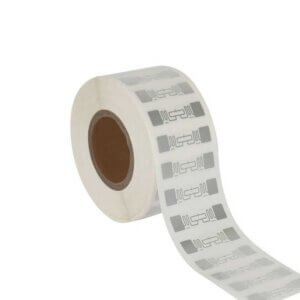The Importance of Label Design for Laundry Detergent, Shampoo, Shower Gel, and Soap
Laundry detergent, shampoo, shower gel, and soap are essential products in daily life. They are not only crucial for our personal care and home cleaning, but also serve as carriers of brand image and values. Among these products, labels are one of the most direct ways for consumers to interact with the product. The design and content of these labels are of great importance.
1. The Core Function of Label Design
Labels are more than just decorative elements; they are the product’s “business card” and can instantly convey key information. For products like laundry detergent, shampoo, shower gel, and soap, the label serves several important functions:
- Conveying Product Information: Labels are a key medium for consumers to learn about the product’s ingredients, usage instructions, precautions, and brand information. Clear and straightforward labels help consumers make quick decisions when choosing a product. For instance, the label of a shampoo often specifies the hair type it is suitable for and highlights any special functions (such as anti-dandruff, nourishment, or repair), allowing consumers to choose based on their needs.
- Shaping Brand Image: Label design often incorporates elements of the brand’s visual identity system (VIS), such as the logo, color scheme, and typography. A unique label design can make the product stand out and enhance brand recall and loyalty. For example, some premium shower gel brands may adopt a minimalist design style with high-quality materials to emphasize luxury.
- Emotional Resonance with Consumers: Good label design not only provides practical information but also uses color, patterns, and text to convey emotions and stimulate consumers’ purchasing desire. For example, shower gel products targeted at younger audiences may use vibrant colors and trendy patterns to catch their attention.
2. Key Points in Laundry Detergent Label Design
As a common household cleaning product, the label design of laundry detergent focuses on clearly conveying its cleaning effectiveness, usage instructions, and eco-friendly features. When purchasing, consumers typically focus on several aspects:
- Cleaning Effectiveness: The label needs to highlight key cleaning functions such as stain removal, antibacterial properties, or fabric protection.
- Eco-friendliness and Ingredients: With growing awareness of environmental concerns, many consumers prefer laundry detergents with natural ingredients and no harmful chemicals. Therefore, labels can emphasize “non-toxic,” “natural ingredients,” or “biodegradable” to appeal to eco-conscious buyers.
- Capacity and Usage Recommendations: Labels should also indicate the product’s net content, suggested usage amount, and any special precautions to help consumers use the product efficiently and avoid waste.
3. Key Points in Shampoo Label Design
Shampoo label design typically focuses on showcasing its hair care benefits and targeting specific consumer groups. Different shampoos, such as those for repair, nourishment, dandruff control, or oil control, need to clearly convey their function. Key design considerations include:
- Functional Positioning: Clear functional labels, such as “deep nourishment,” “dandruff control,” or “oil control,” help consumers choose the right product based on their hair type and needs.
- Ingredient Transparency: As consumers increasingly prioritize ingredient safety, it is important to display information about natural extracts, essential oils, and other key ingredients on the label to build consumer trust.
- Aesthetic Style: The label design of shampoo products can vary depending on the brand’s positioning. Premium brands may opt for a sleek and elegant design, while more mass-market products might use a more accessible and vibrant style.
4. Key Points in Shower Gel Label Design
Shower gel, as a personal care product, focuses on conveying comfort and sensory experiences. Consumers not only care about its functionality (such as moisturizing, oil control, or antibacterial effects), but also about the fragrance and texture. Therefore, shower gel label design often incorporates the following elements:
- Fragrance and Texture: Labels often describe the fragrance profile of the shower gel, such as “fresh floral,” “soothing lavender,” or “energizing citrus,” to evoke a sense of enjoyment even before use.
- Health and Safety: As consumers become more concerned with skin care, shower gel labels frequently highlight attributes like “non-irritating,” “no harmful additives,” and “suitable for sensitive skin” to ensure safety and comfort.
- Aesthetic and Emotional Appeal: Shower gel labels often feature artistic designs that create a relaxing, luxurious atmosphere to attract consumers and enhance their overall bathing experience.
5. Key Points in Soap Label Design
Soap, especially handmade or natural soap, has gained popularity in recent years, and its label design has become more intricate and diverse. Handmade and natural soaps often highlight organic ingredients, lack of chemical additives, and eco-friendly packaging. Key design considerations include:
- Use of Natural Elements: Labels often emphasize natural ingredients such as herbal extracts, essential oils, and minerals, conveying a message of “green and healthy” usage.
- Handmade Craftsmanship: For handmade soaps, labels may feature handwritten-style fonts or artisanal imagery to emphasize the uniqueness and craftsmanship of the product.
- Eco-friendly Packaging: Natural soaps often highlight “eco-friendly packaging” or “plastic-free” labels to appeal to environmentally conscious consumers.
6. Conclusion
Label design for products like laundry detergent, shampoo, shower gel, and soap is not just about listing ingredients and usage instructions—it carries the brand’s image, communicates product benefits, and meets consumer needs. In today’s competitive market, an attractive, professional, and informative label can significantly enhance a product’s market performance. Brands should carefully design their labels based on target consumer preferences, product features, and market trends to create visually appealing labels that provide valuable information, ensuring that consumers can easily choose their product among many options.








Reviews
There are no reviews yet.